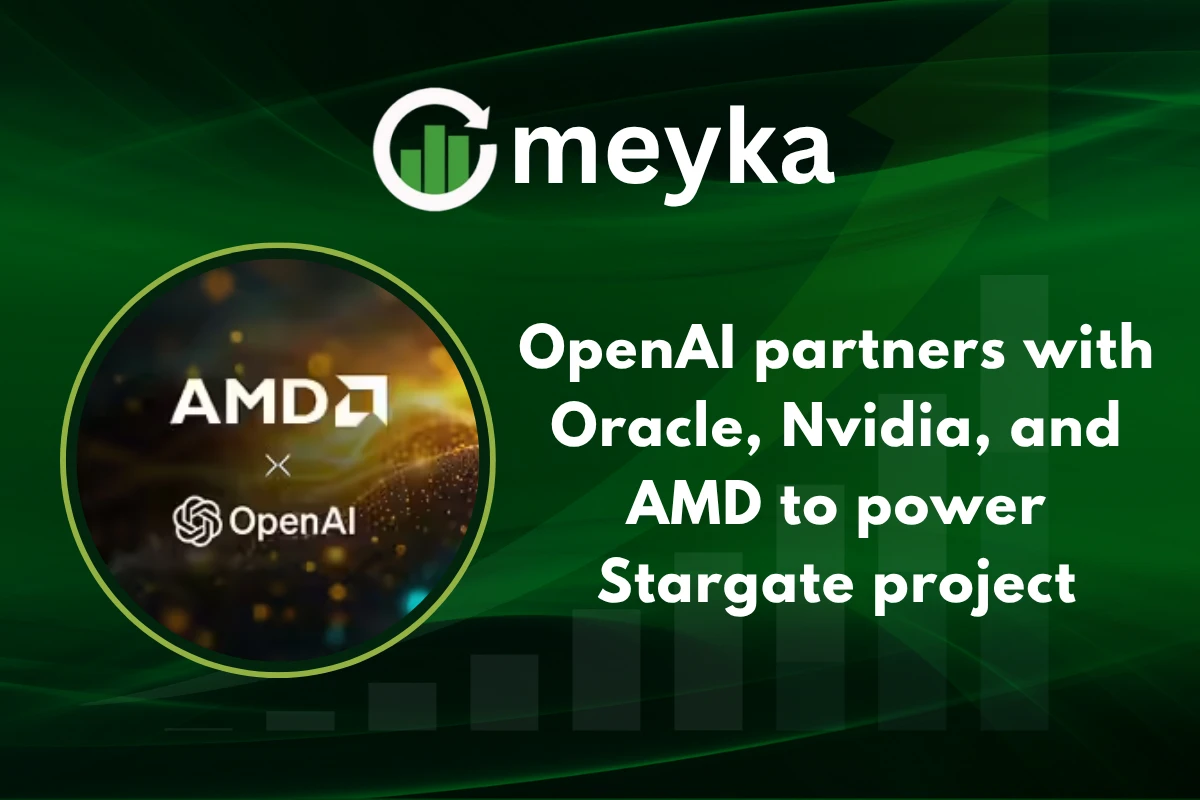OpenAI partners with Oracle, Nvidia, and AMD to power Stargate project
OpenAI has announced a major, multi-partner push to scale its Stargate supercomputing effort. The company is teaming with Oracle, Nvidia, and AMD to expand data center capacity, diversify chip supply, and speed training for next-generation models.
This alliance brings together cloud infrastructure, high-end GPUs, and alternative accelerator chips to meet surging demand for AI compute.
OpenAI’s Stargate project: what it aims to build
The Stargate initiative is OpenAI’s plan to create massive AI compute hubs, optimized for training and serving very large language models and generative systems. The project focuses on faster model training, lower operational cost per workload, and better energy use at scale.
OpenAI is building new data centers in partnership with large cloud and infrastructure firms to host these clusters.
Why does OpenAI need Stargate? Large models need enormous, consistent compute. Stargate aims to give OpenAI the scale, redundancy, and cost controls to develop and run models beyond current limits.
OpenAI and Nvidia: GPUs at the heart of compute
Nvidia supplies the high-performance GPUs that power most modern LLM training and inference. For Stargate, Nvidia’s advanced GPU lines will be central to model throughput and efficiency.
Recent reporting shows Nvidia pitching major investments and large chip commitments tied to OpenAI projects, reflecting how critical GPU capacity is for the AI race.
What Nvidia brings to OpenAI’s Stargate
Nvidia offers proven hardware and a mature software stack for distributed training. That reduces technical risk for OpenAI and accelerates time to results. Nvidia’s tooling for parallelism and memory management helps run larger models more efficiently.
OpenAI and AMD: adding chip diversity and scale
AMD joins the compute mix by supplying large amounts of accelerator capacity. Recent announcements show AMD agreeing to deliver multi-gigawatt compute support to OpenAI, a move that gives OpenAI more options and bargaining power for supply and pricing. AMD’s presence helps avoid overreliance on a single vendor and can lower long-term training costs.
Why include AMD as well as Nvidia? Multiple suppliers reduce supply risk and encourage innovation in chip design and pricing, which matters when models consume enormous compute.
OpenAI and Oracle: cloud, networking, and data centers
Oracle Cloud Infrastructure is part of OpenAI’s plan to host Stargate clusters and provide enterprise-grade networking and storage. Oracle’s data center builds and high high-bandwidth fabric promise the throughput needed for real-time model training and distributed inference. Reports indicate OpenAI is expanding site counts and partnering with cloud operators to ensure resilient, global capacity.
Why Oracle matters for Stargate
Oracle brings enterprise scale and a track record of building large-scale infrastructure. For OpenAI, that means a partner that can host clusters close to customers and handle huge data flows securely.
Financial scale and the “compute web” around OpenAI
The Stargate push is part of a wider wave of compute investments. Industry reporting suggests enormous sums are committed across partners to secure chips, build campuses, and finance operating costs.
Observers warn that these interconnected deals can create circular flows of spending among vendors, but they also enable rapid capacity growth for OpenAI and others.
AI Stock research teams note that the scale of these contracts changes how investors value chipmakers and cloud firms, since steady demand from large AI labs can lift revenue visibility for years.
What Stargate means for AI performance and sustainability
Stargate aims to push both speed and energy efficiency. By co-designing hardware, interconnects, and software, OpenAI and partners can reduce the cost per training run and explore greener cooling and power strategies.
That matters as model training grows more power-intensive and as customers demand more sustainable compute options.
Market reaction and investor view on the OpenAI alliances
Markets reacted positively to the news, with chip and cloud stocks showing gains after reports. Analysts view the multi-vendor approach as pragmatic, reducing single-supplier risks while locking in long-term procurement.
Some investors caution that the scale of spending raises questions about returns and the shape of future competition in infrastructure. AI Stock Analysis points out that companies best able to supply predictable, efficient compute will capture premium pricing in the next five years.
Operational and policy risks for OpenAI’s Stargate rollout
Large cross-company projects face execution challenges. Building data centers takes time, and supplying thousands of accelerators can be complex.
There are also regulatory and geopolitical risks around chip exports, data sovereignty, and energy sourcing. OpenAI’s partners will need to navigate these issues as they scale the Stargate footprint.
How developers and enterprises may benefit from OpenAI’s infrastructure
For customers and developers, Stargate could mean faster model iteration, lower latency inference, and more predictable access to cutting-edge models. Enterprises that adopt OpenAI services may see improved SLAs, localized deployments, and stronger integration with cloud providers as a result of these partnerships.
Will smaller companies get access to Stargate power? Over time, OpenAI and partners typically roll down capabilities through cloud services and APIs, so broader access is likely but may come at tiered pricing.
What to watch next for OpenAI and its partners
Key indicators to watch in the coming months include:
- announcements of new Stargate data center locations,
- timelines for AMD and Nvidia chip deliveries,
- Oracle’s capacity expansion and network fabric rollouts,
- any regulatory filings, or government reviews tied to large infrastructure builds.
These signals will clarify when Stargate becomes fully operational and how much capacity OpenAI can reliably deploy.
Broader industry impact
If Stargate succeeds, other AI labs and cloud vendors will likely accelerate their own buildouts. That could stimulate more competition on performance, price, and energy efficiency. For the semiconductor and cloud sectors, large contracts from OpenAI create both opportunity and scrutiny as global markets react.
Conclusion
OpenAI’s decision to partner with Oracle, Nvidia, and AMD for the Stargate project is a milestone in building the infrastructure that next-generation AI demands. The multi-partner approach spreads risk, boosts capacity, and paves the way for faster, more efficient model development.
The initiative will reshape how large models are trained and delivered, and its ripple effects will touch chips, cloud, and enterprise software for years to come.
For investors and users alike, Stargate is a signal that AI infrastructure is becoming as strategic as the models themselves. AI Stock watchers will follow the rollout closely as the industry enters a new era of compute scale and competition.
FAQ’S
The Stargate project by OpenAI is a large-scale AI supercomputing initiative developed with Oracle, Nvidia, and AMD to boost AI training speed and infrastructure scalability.
OpenAI partnered with Oracle for cloud infrastructure, Nvidia for high-performance GPUs, and AMD for new AI chips to create a diverse and powerful computing ecosystem.
These partnerships give OpenAI access to faster computing power, improved energy efficiency, and cost-effective hardware solutions for its growing AI workloads.
While OpenAI has not given an exact launch date, industry sources expect the first Stargate data centers to go live between 2026 and 2027.
The Stargate collaboration could redefine global AI infrastructure, enabling faster model deployment, reducing energy use, and setting new performance standards in AI computing.
Disclaimer
The above information is based on current market data, which is subject to change, and does not constitute financial advice. Always do your research.






